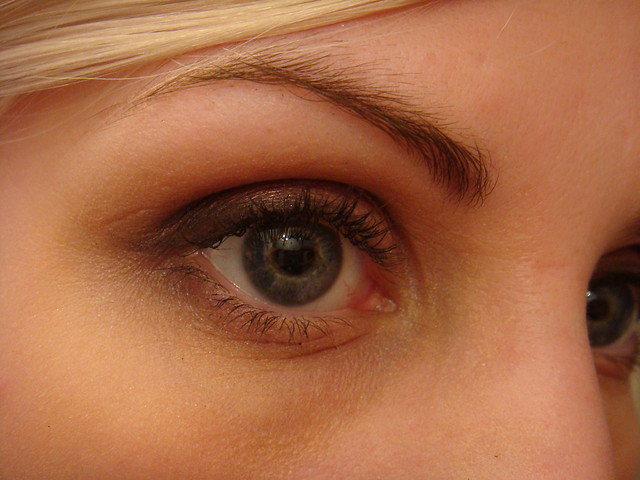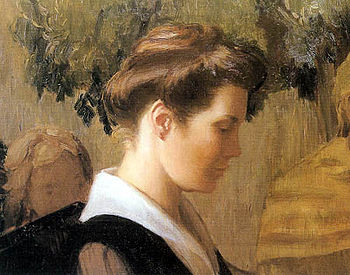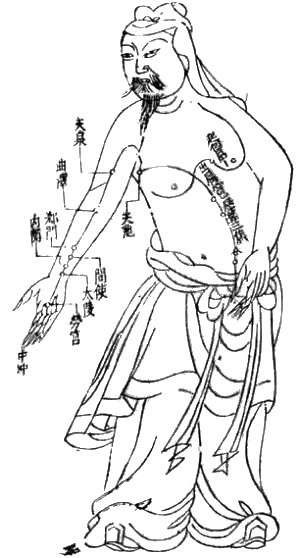 |
| A photograph of a painted Wheel of the Year from the Museum of Witchcraft, Boscastle. (Photo credit: Wikipedia) |
This article will detail all of these holy days and hopefully shed a little light on what witches do throughout the year to honor their Deities.
The Esbat
As stated above, the Esbat is a ceremony that coincides with the cycles of the moon. Generally, the day that it is done occurs when the moon is full, though this is not necessary. The full moon is significant because witches firmly believe that the power of magickal workings wax and wane with the phases of the moon. When the moon is waxing or becoming fuller, it is good to perform rites that are drawing things to you or increasing positive influences in general. When the moon is waning or diminishing, it is good for banishing influences that are no longer wanted or getting rid of negativity. Yet when the moon is full, the magickal workings are at their peak, and it is good for nearly any rite that a witch may wish to perform. The new moon, or dark moon, occurs when the moon is not visible at all. During this time, the rites that are performed are either for extreme protection rites or negative magicks.
On whatever day the esbat is performed, it is done in the evening or at night. The reason behind this is that these rites are meant to be working with the Goddess, who represented by the moon.
The actual process of performing the esbat can be summed up very concisely. The witch or coven will gather at a designated ritual space. There, they will cast a circle, and perform rites that will raise their magickal and psychic power, and then direct that power at their desired goal. Since there are so many variables as to what a witch or group of witches may wish to direct their energy, it is difficult to offer up an example of what these rites may entail.
However, one of the things that is a common theme among esbats is that it is a time for connecting and communing with Deity. This is often done by the reciting of The Wiccan Rede and The Charge of the Goddess while in a circle. Afterward, time may be spent in either meditation or performing acts of divination with tarot cards, runes or other means. This is followed by a communion of cakes and wine, where the gathered witches will celebrate their coming together and catch up on the previous month and make plans for the coming one. Then the ritual circle is opened, the leftover cakes and wine are offered up to Nature, and the witches will go their separate ways.
The Eight High Holy Days
There are eight major holidays that Wiccans celebrate:
- Samhain (pronounce saw-vin or sow-en)
- Yule
- Candlemas
- Ostara
- Beltane
- Midsummer
- Lammas
- and Mabon
Each of the Holy Days represents a different turning of the seasons, and a different phase of life. The common representation of these phases is the God, though many practitioners incorporate an aspect of the Goddess in some fashion as well. They are primarily Sun festivals, and, unlike esbats, the rituals are often performed when the sun is at its highest in the sky.
Sabbats are usually large gatherings where entire families will come together and celebrate with food and drink in addition to the religious rites.
Samhain
Samhain is probably the most recognizable of all of the Wiccan Sabbats. It falls on October 31st and signifies the ending of one cycle of the year. While many view it as the beginning of the next yearly cycle, that does not actually occur until Yule in December.
The main symbolism behind this holiday is death and honoring loved ones that have passed on. It is commonly thought that on this night, the veil between the worlds is at its thinnest, and witches take advantage of this opportunity to communicate with their family and friends who have passed on.
Samhain is also the last harvest festival of the year, and the last opportunity for the coven and their families to come together to share their resources before digging in for the winter. The period of time between Samhain and Yule is spent contemplating plans for the coming year and remembering the year that has passed.
Yule
Yule is generally thought to coincide with the Christian holiday of Christmas. This is not precisely so. Yule actually falls on the day of the winter solstice, which generally falls on or around December 21st.
The significance of this holiday is that of rebirth. This is the day where the days begin to grow longer, and the sun is making a comeback. The general representation of this is of Holly King, a Dark God, passing and being replaced by the Oak King, or Sun God. Though the sabbat that signifies the beginning of the year may vary from tradition to tradition, this is the one that is most popular in signifying the beginning of the year.
All of the sabbats represent a phase of life, and Yule falls into the fertility category. This is a time of conception, where the beginnings of life begin to stir. When covens and families come together on this holiday, plans begin to be made for the coming year, as well as preparations for the coming spring.
Candlemas
Candlemas is also known by the name of Imbolc. It is well and truly the first fertility festival of springtime. The specific date that this day falls on varies from tradition to tradition, but it can be anywhere from January 31st to February 2nd. At this time, we are beginning to see the very first signs of spring, and the renewal of life.
The festivities for Candlemas all center on clearing out the old and making way for the new. The Maiden aspect of the Goddess is honored at this time, as are any Gods and Goddesses that relate to love and fertility. This holiday is considered an especially auspicious time for a new marriage or relationship.
One of the traditional symbols of Candlemas is the plough. They are often decorated and incorporated into the festivities. Another tradition for the holiday is to create a besom, a simple broom constructed of twigs or straw, and use it to ritually cleanse the home. It is then placed near the front, symbolizing sweeping out the old and welcoming the new.
Ostara
Also called Eostar, this High Holy Day falls on the spring equinox, on or near March 21st. This is the second of the three fertility festivals. Springtime is coming in full force at this time, and planting for the year's crops is well underway. New spring growth can be seen everywhere, and the Gods are petitioned for luck with the crops and the home.
Two of the traditional symbols for this holiday is the egg and the rabbit. The egg is an emblem of new life and new growth, and it is incorporated into many ritual workings and festivities at this time. The rabbit, known for its prolific mating habits, is also a symbol of growth and abundance. Both also symbolize change. The Christian faith has fully adopted both of these symbols into their celebrations that occur at near the same time.
Beltane
Also known as May Day, this Holy Day falls on May first. It is the last of the fertility festivals for the year, and with it comes unabashed sexuality for many traditions. The May Pole is one symbol of this holiday that is found throughout many traditions. It is a tall pole set in the ground, symbolizing the Sun God uniting with Earth. It is decorated with long ribbons and fresh flowers, and, of course, maidens traditionally dance around the pole.
One of the traditional May Day activities for this holiday is to secretly leave baskets of flowers and goodies at the doors of your neighbors.
Generally, this is a holiday that celebrates and revels in the return of the sun.
Midsummer
This Holy Day celebrates the God, represented by the sun in all of his glory. It is celebrated on the summer solstice when the longest day of the year takes place. Midsummer is neither a fertility festival nor a harvest festival. In this way, it is similar to Yule. On this day, rites often center on protection for the home and family for the coming year, rites of divination, and celebrating the abundance of The Oak King in his prime of life.
For those who work with faerie energy in their rites, Midsummer is an ideal time to commune with them. It is a common tradition for witches to go out in the twilight and look for faerie folk in stands of oak, ash and thorn trees.
Lammas
Another name for this holiday is Lughnassadh. It occurs on August 1st, and it is the first of the three harvest sabbats celebrated by witches. Attention turns now to harvest the crops and gardens, and preparations begin for the coming winter. The days are beginning to grow shorter, and the Sun God begins to lose his strength as the days grow shorter.
As this is the time of year when we first begin to reap the bounties of harvest, it is often a holiday accompanied with feasting and celebration. Decorations and dollies are often made from dried ears of corn, and used in rites and to decorate the home.
Mabon
Mabon is the primary harvest festival, the counterpoint to Ostara, and it occurs on the Autumnal Equinox. On this day, witches pay homage to retreat daylight and prepare for the coming winter. This holiday symbolizes the God in old age and readying for his impending death and rebirth.
Though this holiday is a little more somber than the rest of them, it is also one where Wiccans are sure to give thanks for what they have received throughout the past year. It is a popular time of year for witches and pagans to give back to their communities and generally share their bountiful harvests.
With so many holidays to celebrate, Wiccans always have something to look forward to in their faith. As the seasons come and go, witches around the world celebrate the wheel of the year. Though traditions and names may be a little different from place to place, they are all basically the same at heart.



























